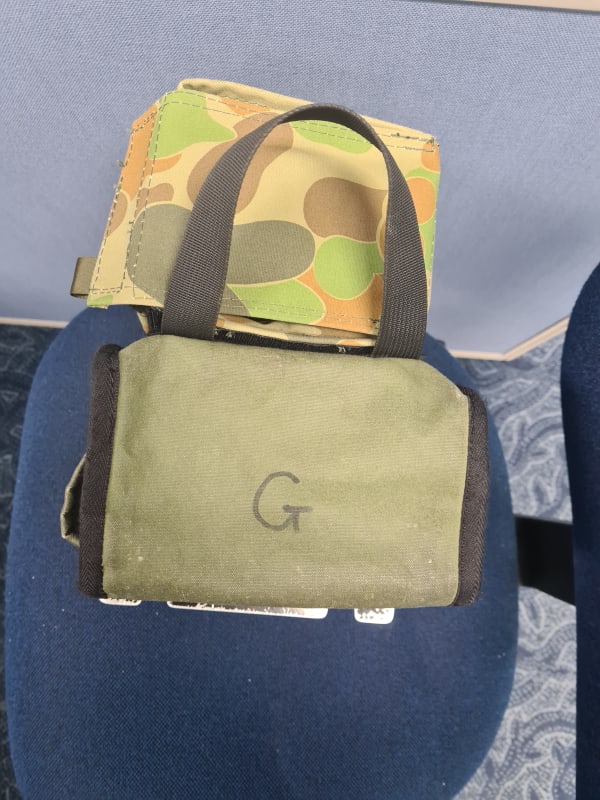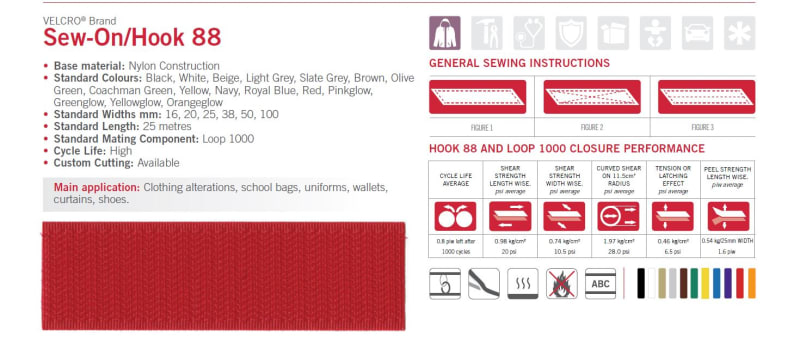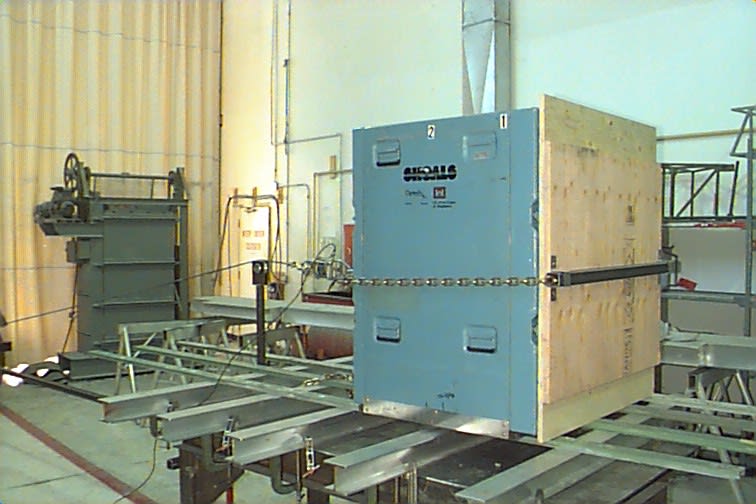FYI... ONLY... for-what it's worth... Yeah I've done this too, guys...
WHAT Combination, exactly are You using... lots of material options and important physical variety.
MIL-F-21840 CX FASTENER TAPES, HOOK AND LOOP, SYNTHETIC
A-A-55126 FASTENER TAPES, HOOK AND LOOP, SYNTHETIC
ASTM D5169 Standard Test Method for Shear Strength (Dynamic Method) of Hook and Loop Touch Fasteners
ASTM D123 Standard Terminology Relating to Textiles
ASTM D5646 Standard Terminology Relating to Seams and Stitches Used in Home Sewing
ASTM D6193 Standard Practice for Stitches and Seams
My company has design standards developed from tests and years of experience... perhaps Yours's does also... or an affiliate.
Or perhaps you need to run some tests of the materials that will be used [see listed specifications].
CAUTION: Constant use [O-C-O-C-O-C-etc], environment [sun, chemicals, sand, mud, water, etc] and laundering are all factors affecting long-term utility and reliability. In many cases [aviation] heat/cold/fire and environmental [ozone, etc] resistance are design factors. Also, installed tape-loads must be shear... with 'peel' only applied for opening/closing.
CAUTION: Selection/use of suitable/matched thread, cloth, webbing [textile tape], etc... and sewing practices ['the stitching']... are important factors. These affect available surface area and longevity of the Tape when in-position on the assembly... and must match the operational environment. Threads are available in natural plant fibers, glass-fibers, aramid or para-aramid fibers, Dacron or rayon or other mixed fibers, etc [choose wisely]. Choose stitching that is appropriate for the product... and does not blank-out [reduce] available hook/pile surface area.
Also... never hurts to evaluate/test similar products 'on-the-market'... especially sporting goods... that may have similar performance requirements.
Also, there may come a time when the product must be repaired in-the-field or back-shop to prevent further damage and restore utility. GIs hate when something can't be repaired in-time-of-need. A general maintenance, washing and repair document [printed or referenced on-line]… or fabric placard... could be useful. There is a joint Army/USAF manual for fabric items repair FM 10-16 / T.O. 00-25-120... 'General Fabric Repair'.
Regards, Wil Taylor
o Trust - But Verify!
o We believe to be true what we prefer to be true. [Unknown]
o For those who believe, no proof is required; for those who cannot believe, no proof is possible. [variation,Stuart Chase]
o Unfortunately, in science what You 'believe' is irrelevant. ["Orion", Homebuiltairplanes.com forum]





![[smile] [smile] [smile]](/data/assets/smilies/smile.gif)

